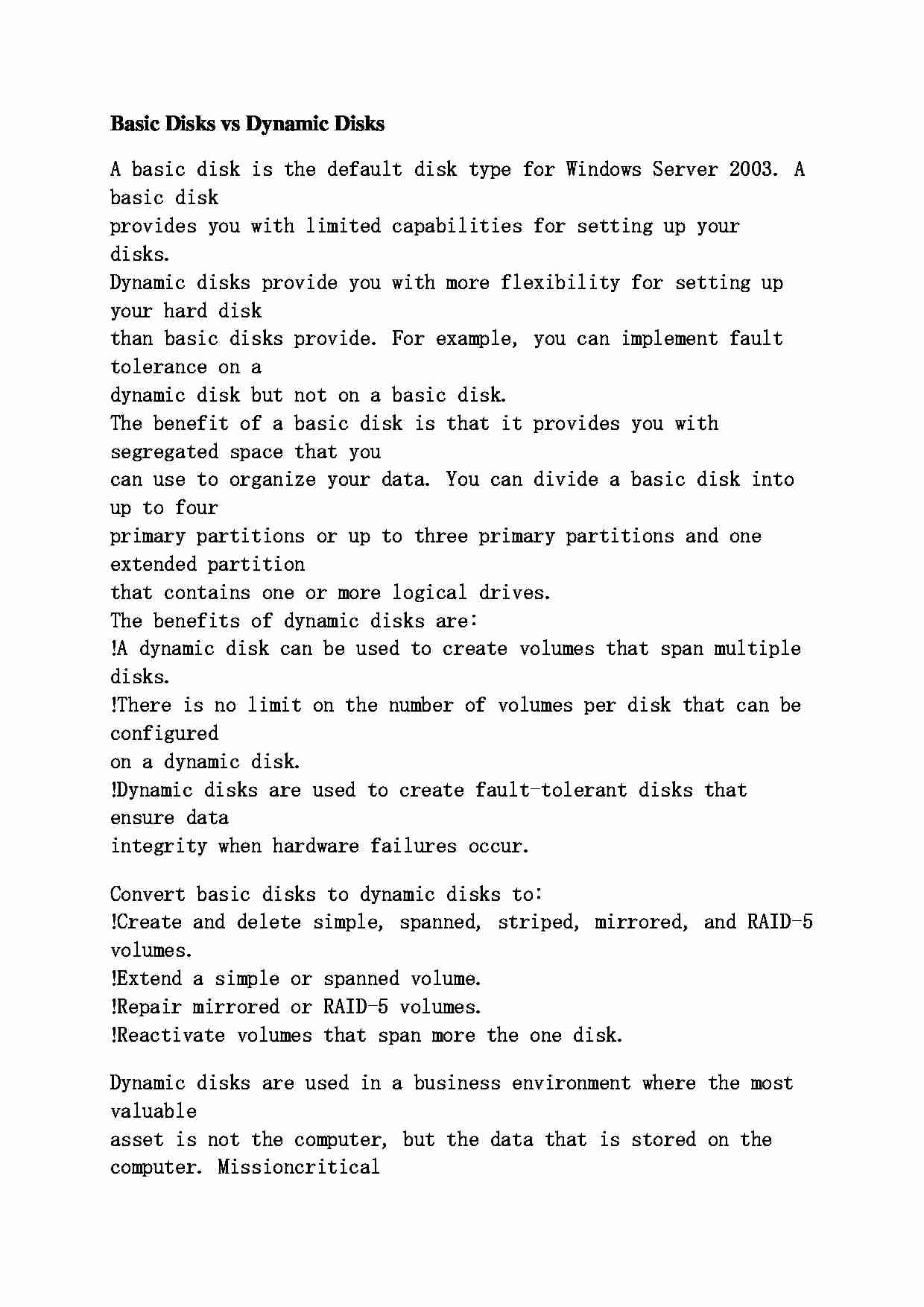
Basic Disks vs Dynamic Disks A basic disk is the default disk type for Windows Server 2003. A basic disk
provides you with limited capabilities for setting up your disks.
Dynamic disks provide you with more flexibility for setting up your hard disk
than basic disks provide. For example, you can implement fault tolerance on a
dynamic disk but not on a basic disk.
The benefit of a basic disk is that it provides you with segregated space that you
can use to organize your data. You can divide a basic disk into up to four
primary partitions or up to three primary partitions and one extended partition
that contains one or more logical drives.
The benefits of dynamic disks are:
! A dynamic disk can be used to create volumes that span multiple disks.
! There is no limit on the number of volumes per disk that can be configured
on a dynamic disk.
! Dynamic disks are used to create fault-tolerant disks that ensure data
integrity when hardware failures occur.
Convert basic disks to dynamic disks to:
! Create and delete simple, spanned, striped, mirrored, and RAID-5 volumes.
! Extend a simple or spanned volume.
! Repair mirrored or RAID-5 volumes.
! Reactivate volumes that span more the one disk.
Dynamic disks are used in a business environment where the most valuable
asset is not the computer, but the data that is stored on the computer. Missioncritical
data, that is, data that must be available 24 hours a day, 7 days a week,
should be stored on fault-tolerant dynamic volumes.
... zobacz całą notatkę



Komentarze użytkowników (0)